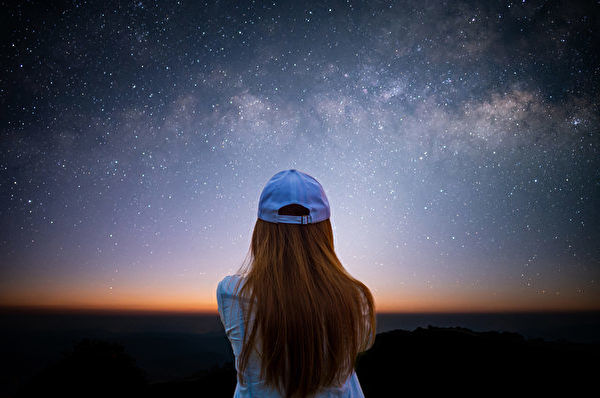Recently, a new photo has surfaced showing the bright red Mars and the blue “Heart of the Lion,” which is 79 light-years away from Earth, rare in the sky together in the same frame, resembling two dazzling red and blue gemstones in the universe. Despite their significant differences, they currently appear remarkably similar and have been gradually moving apart since June 22.
Dedicated to observing the universe and understanding Earth, members of The Virtual Telescope Project captured an incredible image on June 16 using a 14-inch telescope in Italy. The two celestial bodies in the sky have almost identical brightness and size, namely Mars and the Heart of the Lion. On June 17, the two appeared very close, only 0.7 degrees apart, equivalent to 1.5 times the diameter of the moon in the night sky.
Mars emits a dazzling red light at night, making it appear like a red star. The Heart of the Lion, also known as Regulus, is the brightest star in the Leo constellation and the Chinese asterism “Xuanyuan.” Xuanyuan consists of 17 stars, forming a shape resembling a winding yellow dragon soaring through the universe.
The observed Heart of the Lion actually comes from a system of four stars. These stars are arranged in two pairs and are about 79 light-years away from Earth, making them approximately 2.8 million times farther than Mars from Earth. The blue hue of this system comes from the largest blue subgiant star inside, with a mass about 4.5 times that of the Sun.
Due to its proximity to the ecliptic, the Heart of the Lion often appears next to other planets and moons of the solar system or may be obscured by them, making it challenging to observe.
The encounter of Mars and the Heart of the Lion began on June 11, with Mars slightly dimmer at 1.4 magnitude (higher magnitude means fainter) compared to the Heart of the Lion’s 1.3 magnitude, albeit difficult to discern with the naked eye. The two will remain close until June 22.
Currently, the two celestial bodies are gradually moving apart but can still be observed with the naked eye. Astronomers recommend amateur stargazers to use low-power telescopes or binoculars for a better viewing experience. The Space website notes that the best observation time is during clear twilight skies.
Furthermore, astronomers point out that careful observation of the photo may reveal a faint, blurry spot between Mars and the Heart of the Lion. This spot, located slightly closer to the blue star, is a stellar trace left behind by the Leo I dwarf galaxy, about 820,000 light-years away.
Astronomer and founder of The Virtual Telescope Project, Gianluca Masi, expressed admiration for the beautiful colors of the celestial bodies, stating capturing Mars and the Heart of the Lion in the same frame is a rare and unforgettable event. He also noted that they will present a magnificent spectacle, with Mars displaying its legendary red hue while Regulus shines like a dazzling blue diamond.
This year (2025) has seen several planetary conjunctions, such as the rare “Planetary Parade” in February when the seven major planets of the solar system aligned almost in a straight line in the night sky, creating the uncommon “Seven-Star Chain.” Additionally, later in June, Mars, Mercury, and the moon will have a conjunction.

